Wondering how to get concrete white again? You’re not alone. That once crisp, clean surface out front now looks more like a weather map in late January — splotchy, stained, and a bit sad. Getting it back to white? Even harder if you don’t know what you’re doing.
Good news — we’ve got the answer. We’ve scrubbed, sprayed, and pressure-washed concrete more than we care to count, and we’re here to walk you through what actually works — and what’ll just waste your weekend (and possibly your patio).
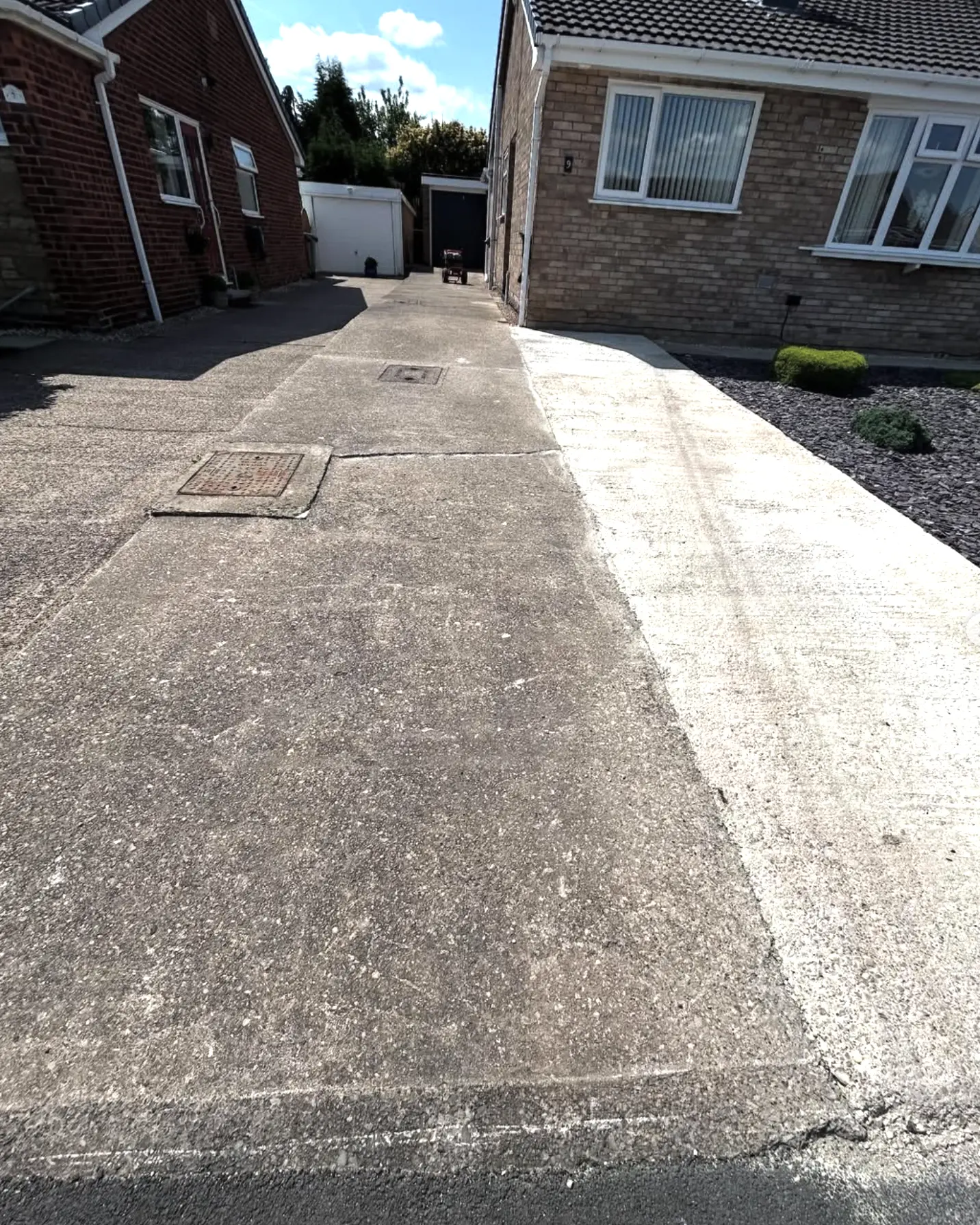
From Bright to Blotchy
Let’s call out the usual suspects. If your white concrete has gone rogue, chances are it’s down to one (or more) of these:
- Bore water stains – That brown colour from mineral-heavy water is infamous across regional WA and the NT.
- Mould and algae – Love shade, humidity, and neglected garden sprayers.
- Rust stains – Often from patio furnishings or exposed metal furniture legs.
- Oil stains and grease stains – From cars, barbecues, or foot traffic with grubby boots.
- Paint stains and splatter – Left over from home improvement projects and paint sprayers.
- Organic stains – Think leaves, dirt, pollen, even the occasional possum mess.
Each of these needs a specific cleaning method. Trust us, blasting everything with a power washer or harsh cleaners won’t always fix it — sometimes it’ll just push the stain deeper into porous concrete.
Step-by-Step: How to Get It White Again
Getting concrete white again isn’t about blasting it with the harshest gear you’ve got — it’s about using the right cleaning method for the right type of stain. Whether it’s rust, oil, algae, or just age, there’s usually a fix — and often, it starts with white vinegar, a scrub brush, and a bit of patience.
Step 1: Clear the Deck (Literally)
Move anything that’s in the way — bins, bikes, patio furniture, rogue bricks from last year’s paving job. Sweep off all loose debris using a stiff broom or push broom. Rinse down the entire surface with a hose with a spray nozzle to prep the area. If you’re using any chemical cleaner, cover nearby plants with plastic sheeting to avoid accidental damage.
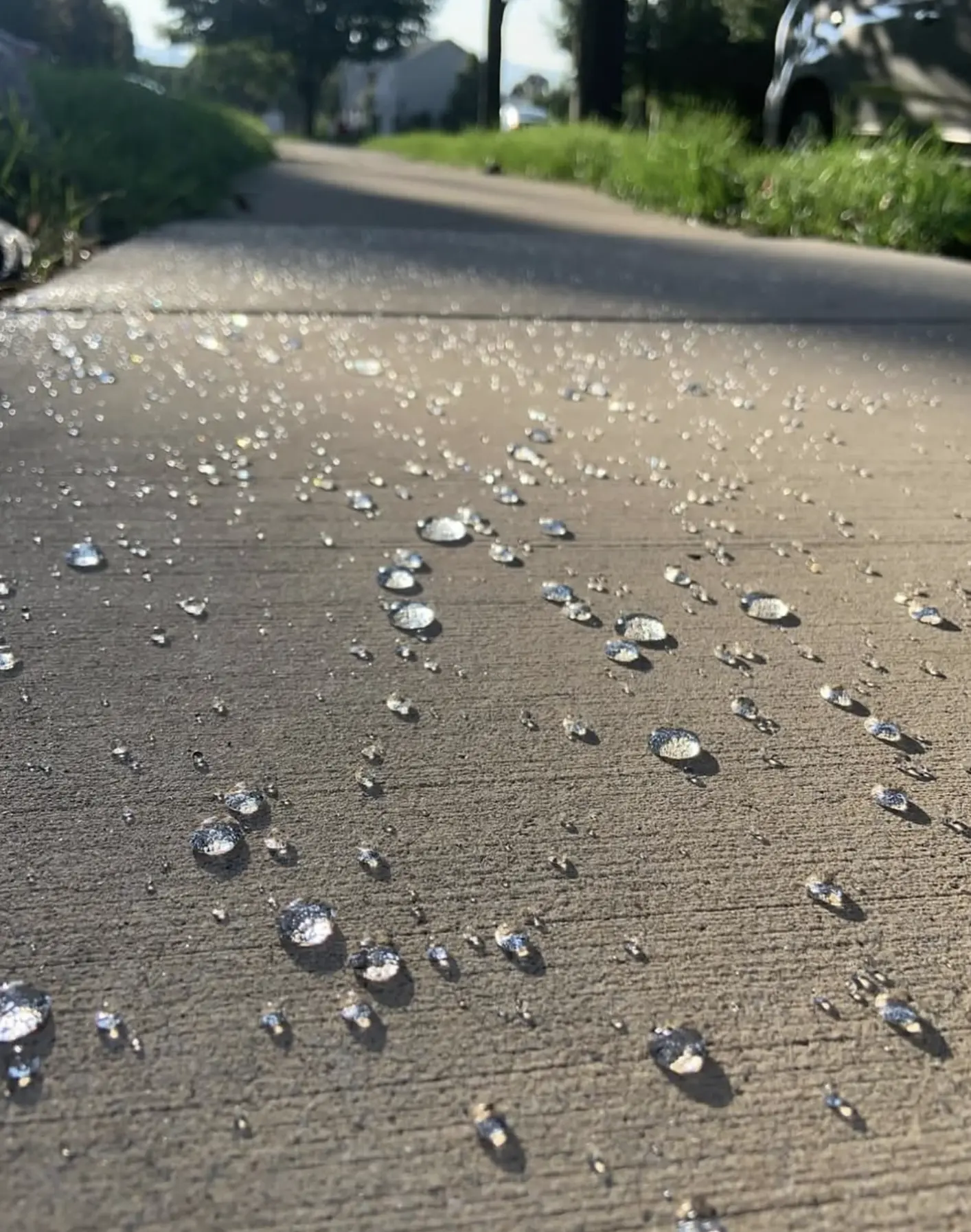
Step 2: Identify the Type of Stain
The type of stain determines the cleaning action. Here’s a rough cheat sheet:
| Stain Type | Best Cleaner or Approach |
|---|---|
| Mould or algae | Bleach solution or sodium hypochlorite |
| Rust spots | Oxalic acid, white vinegar, or commercial rust remover |
| Oil/grease stains | Alkaline degreaser soap, baking soda mixture, or concrete degreaser |
| Paint stains | Paint strippers, paint from concrete removers |
| Organic stains | Oxygen bleach or mild detergent |
*You don’t want to use something too strong and cause potential discolouration, especially if you’re dealing with a decorative concrete finish or unsealed finishes.
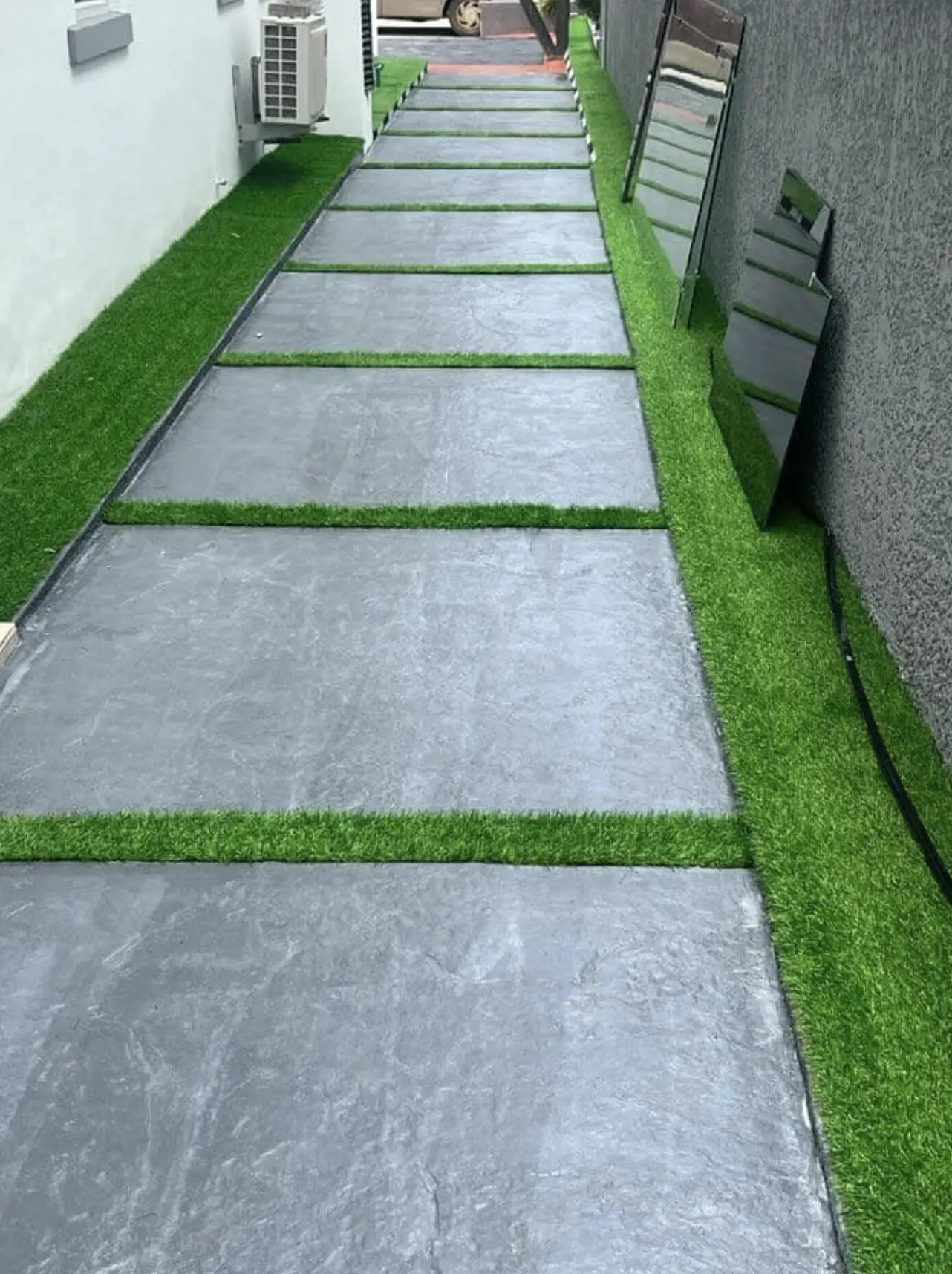
Step 3: Make Your Cleaning Solution
For most stains, you can whip up an effective solution with common gear:
- White vinegar for rust stains or light mould (use undiluted vinegar and let it sit 15–30 minutes)
- Baking soda + warm water for grease and light cleaning
- Concrete cleaning products or commercial cleaning products for stubborn stains
- Heavy-duty cleaning solution like Muriatic acid (only for serious cases — use with extreme care and acid-resistant gloves)
Always add acid to water, not the other way around — we’ve seen too many garden sprayers melt because someone got it backwards.
Step 4: Scrub and Dwell
Using a stiff-bristled brush, stiff-bristled nylon brush, or a deck brush, apply your solution and give it some elbow grease. For light cleaning, a soft-bristled brush or nylon-bristled brush might do. For stubborn spots like glue residue or paint stains, you may need a metal brush — but avoid it on decorative concrete or you’ll end up with scratches.
Let the solution dwell for 10–15 minutes (longer for tough stains). Don’t let it dry out — give it a mist of clean water if needed.
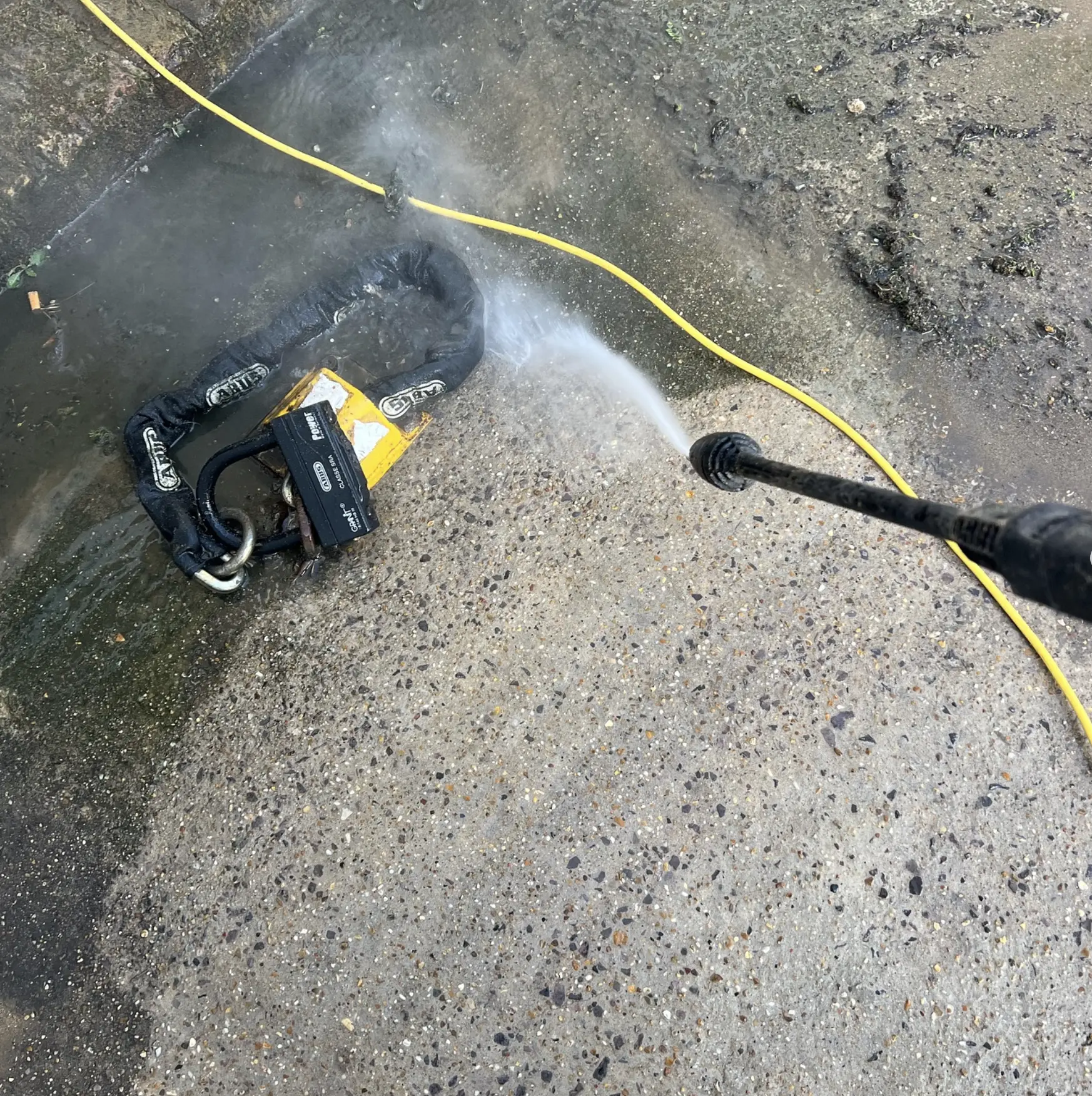
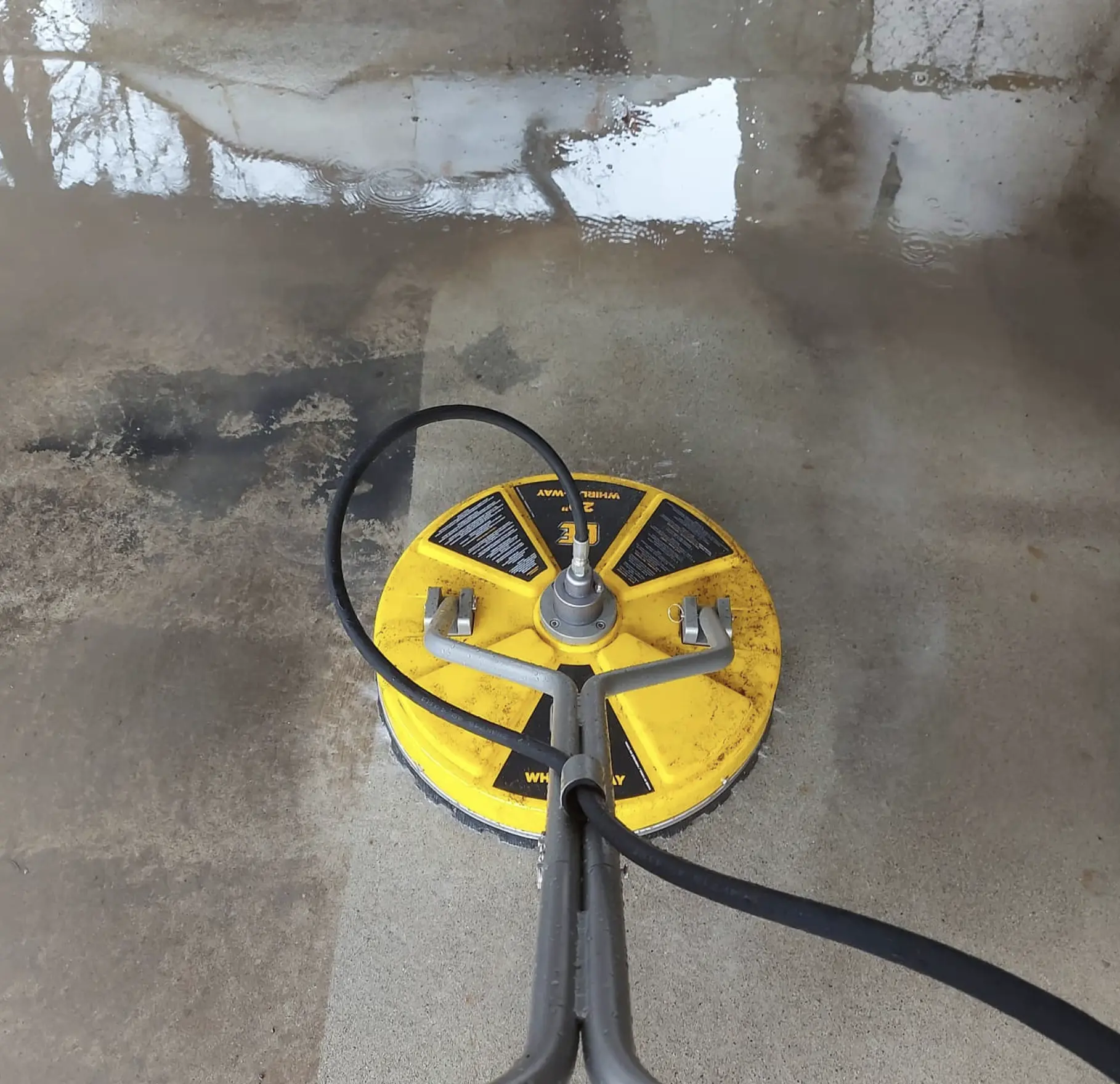
Step 5: Blast It — Carefully
If you’re using a pressure washer or pressure hose:
- Use the correct nozzle (25° or 40° fan tip)
- Start at lower PSI (around 2500) and increase only if needed
- Avoid pressure washing concrete with water from a dodgy tap — use clean water only
- For delicate finishes, consider soft washing or using a garden hose and stiff brush instead. The goal is to clean concrete, not gouge it.
We’ve seen power washers remove not only the stain but half the concrete finish — especially on older patios or concrete pavers.
Step 6: Rinse With Fresh Water
Thoroughly rinse the entire patio or concrete slab with fresh water. Use a hose or pressure hose to remove from residue or leftover cleaning agent.
This step is vital — if you leave cleaning chemicals to dry, they can cause additional discolouration, especially in sunny or windy conditions. For best results, rinse in the direction of your slope so runoff doesn’t puddle.
Step 7: Let It Dry and Seal (Optional But Smart)
Let the patio surface or concrete floor dry out completely. Then, assess:
Do you see beaded-up water? That means it’s sealed. If not, it might be time for a fresh concrete sealer like a Chem-Coat sealer or other protective finish.
Want better curb appeal? A sealer gives it a nice attractive finish and helps protect from water stains, organic material, and future grease spills.
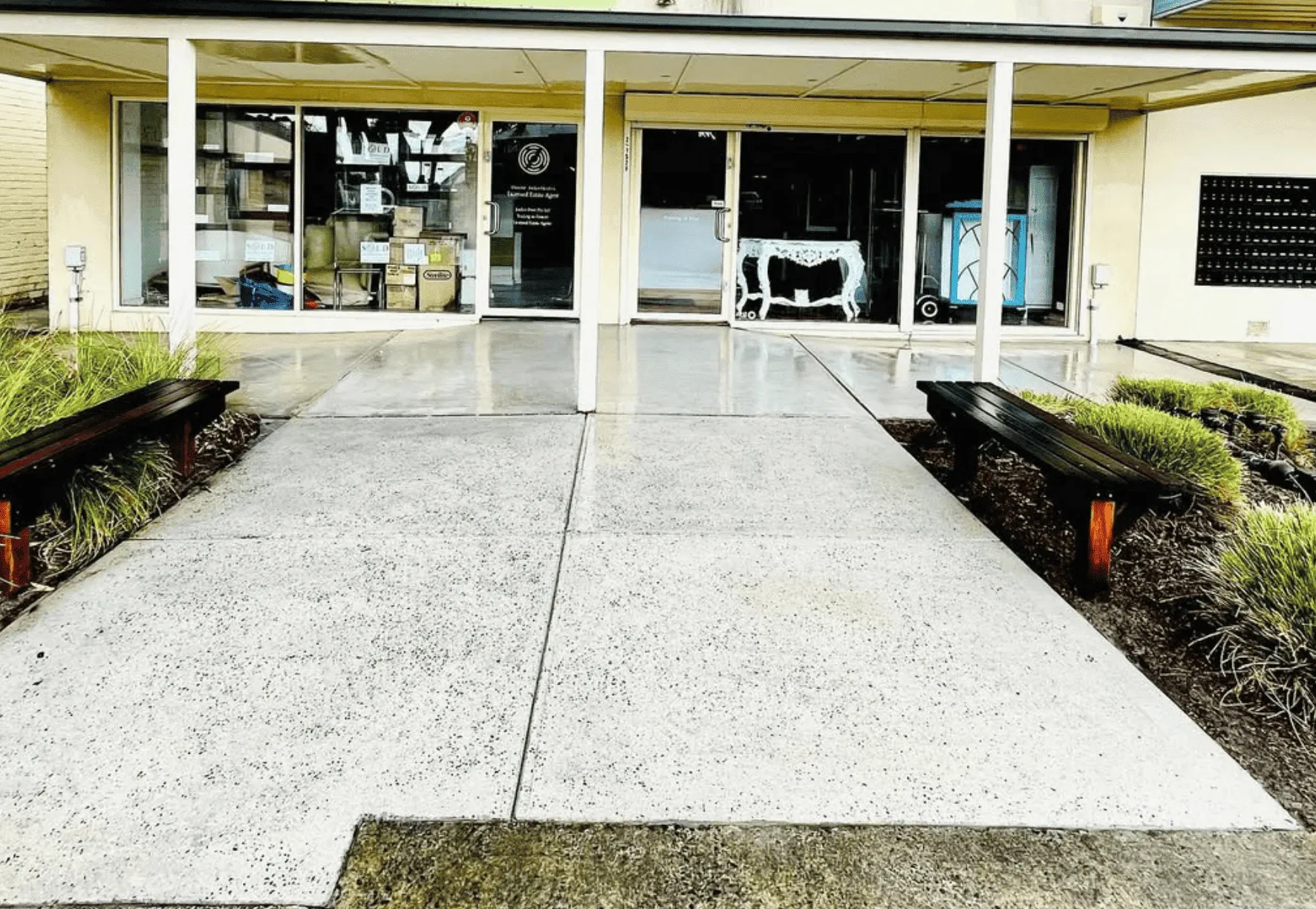
Methods We Do Not Recommend
- Using chlorine bleach on sealed concrete – Too harsh and can cause a permanent colour change.
- Acid washing without PPE – Wear safety goggles, protective eyewear, gloves, and long sleeves if using Muriatic acid or other strong acid.
- Relying on just hot water – It helps, but most stains need more than just heat and pressure.
- Overusing the pressure washer – Especially on porous concrete, this can blast open the surface and invite more stains later.
One bloke in Mount Pleasant Pressure Washing tried to clean a concrete counter with a 4000 PSI jet and ended up needing to pour a new slab. Don’t be that guy.
Maintenance Tips
- Use a mild detergent or alkaline soap for monthly spot cleans.
- Avoid using harsh chemicals unless absolutely necessary.
- Reseal every 1–2 years to maintain an attractive finish and easier clean-ups.
- Sweep and rinse regularly with a bit of water from a garden hose.
- Treat stains early using natural cleaner mixes like baking soda or undiluted vinegar.
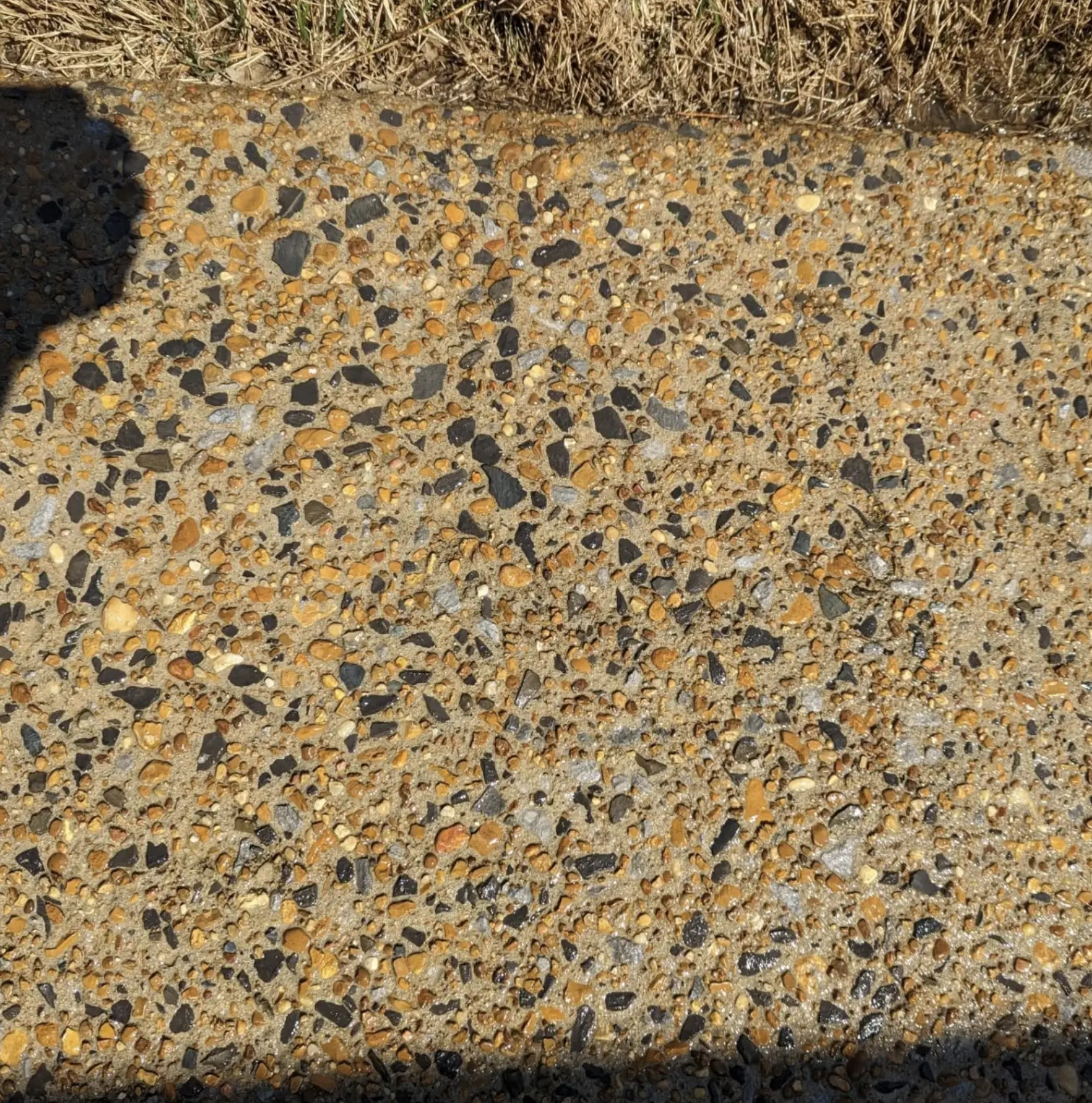
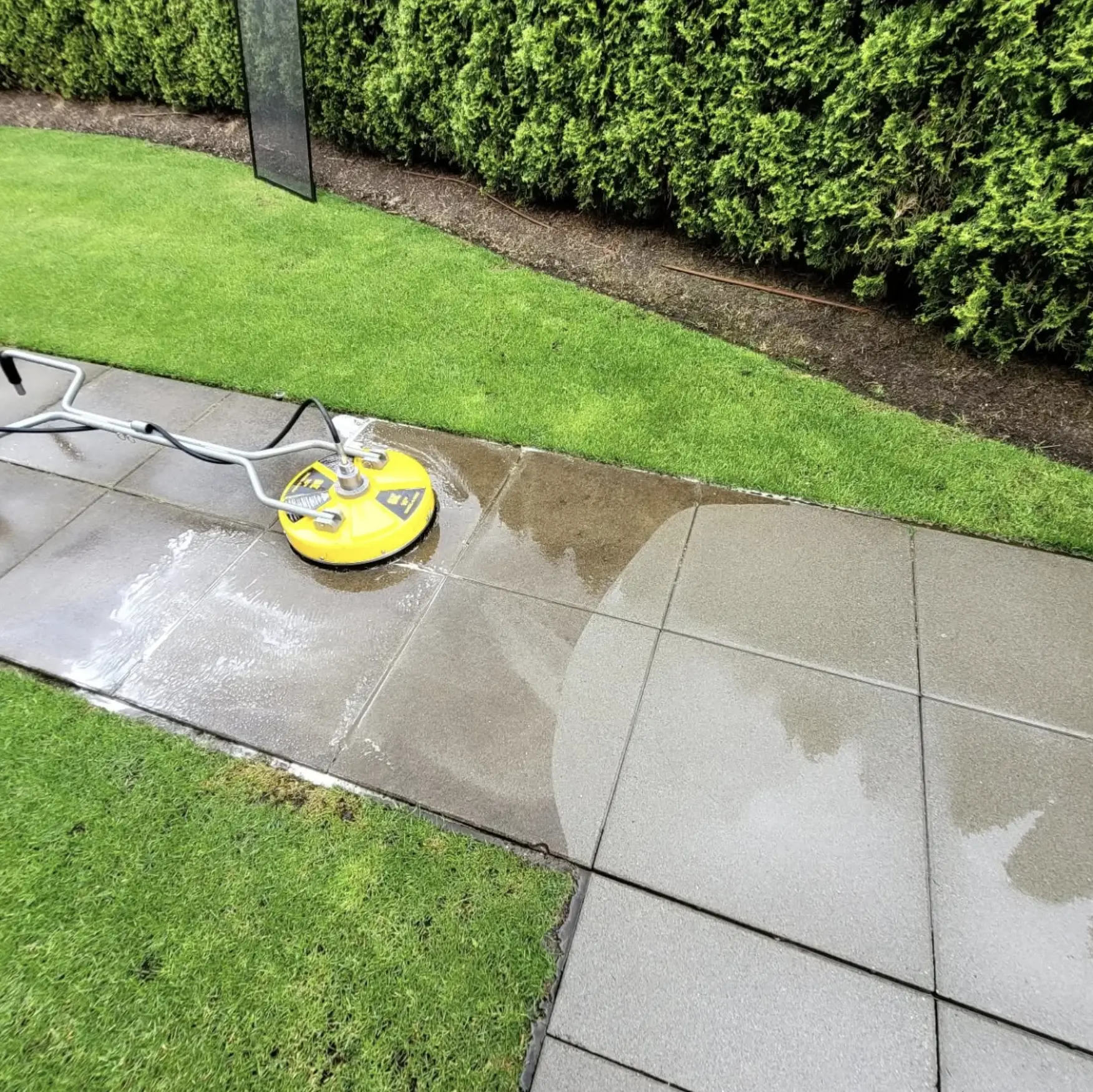
Your Quick Concrete Cleaning Toolkit
Here’s what we recommend keeping on hand:
- Pump sprayer
- Safety glasses & rubber gloves
- Plastic bucket & scrub brush
- Deck brush or stiff broom
- Oxygen bleach & white vinegar
- Concrete degreaser or alkaline cleaner
- Muriatic acid (only for serious rust stains)
- Soft wash mix if using bleach solution
- Clean water supply and a hose with a spray nozzle
When to Call in the Pros
Here’s when it’s worth getting a concrete cleaning crew involved:
- Your concrete is decorative, coloured or sealed
- Stains aren’t shifting after two rounds
- You’ve got red dust or bore water build-up (needs specific chemical know-how)
- You’re prepping for sealing, painting, or a real estate sale
We use commercial-grade soft-wash systems and specific stain removers for each surface type. And we don’t turn your front yard into a slip hazard.
You’ll find the Window Cleaning Melbourne Crew just as handy with a deck brush as we are on a ladder — and yes, we know a thing or two about bringing sad-looking concrete back to bright white across Melbourne.
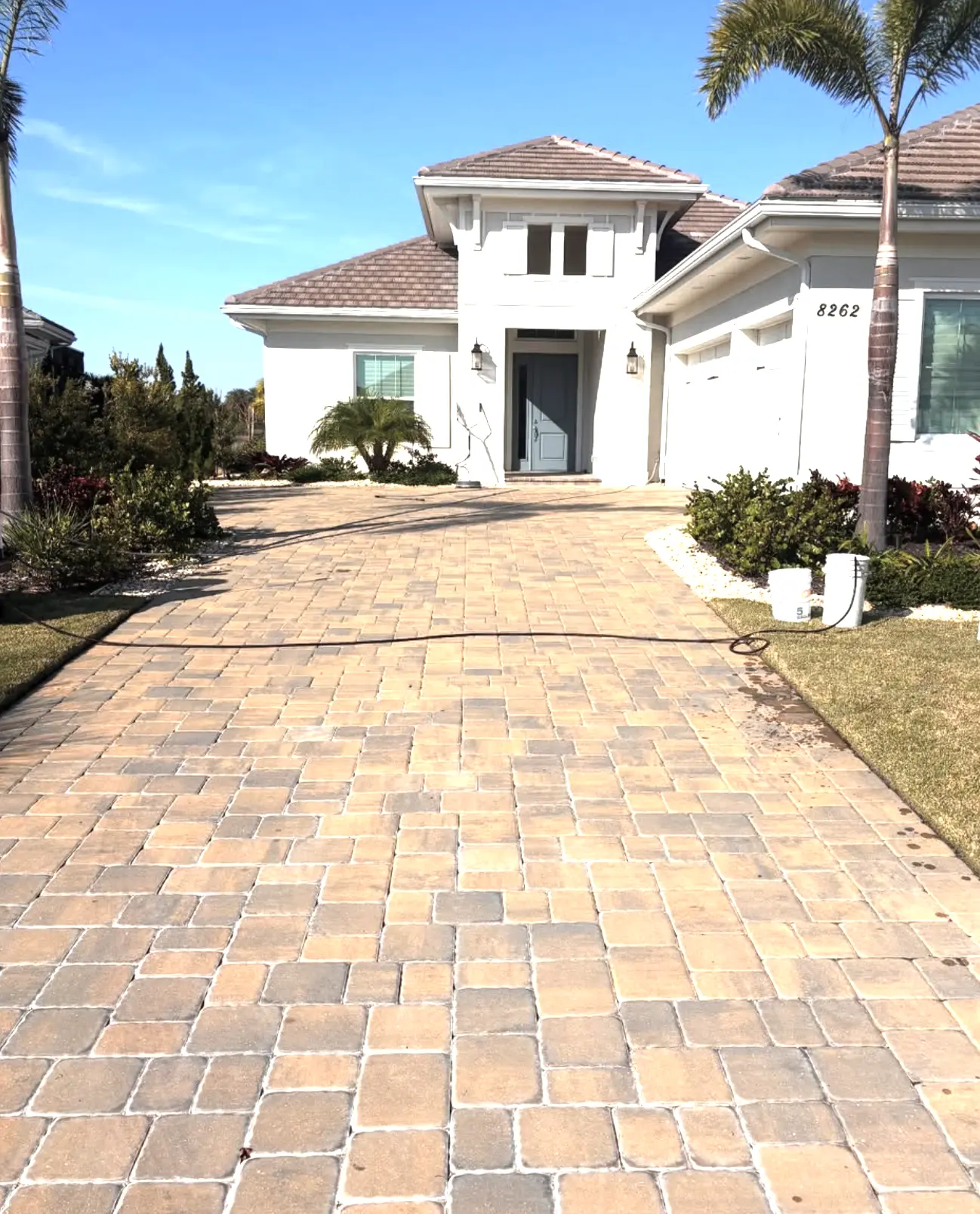
FAQ
Can I use white vinegar to clean concrete?
Yes — it’s a great natural option for removing rust stains and light organic stains. Let it sit for 15–30 minutes, scrub with a stiff brush, and rinse with clean water.
What’s the best way to clean concrete?
Start with sweeping off loose debris, pre-treat stains with the right solution, scrub with a stiff-bristled brush, and rinse thoroughly. Seal it after drying for long-term protection.
Will a pressure washer make my concrete white again?
Only if paired with the right cleaning solution. Pressure washing alone often just moves the grime around. It’s effective, but not a miracle on tough stains.
What’s the safest way to remove oil stains from a garage floor?
Use a concrete degreaser or baking soda paste, scrub with a nylon brush, and rinse. Avoid bleach products, as they can worsen potential discolouration on unsealed concrete.
Should I use bleach or Muriatic acid for cleaning?
Use bleach for organic stains and Muriatic acid for rust spots or paint splatter — but both require protective equipment, careful dilution (always add acid to water), and a well-ventilated area.
